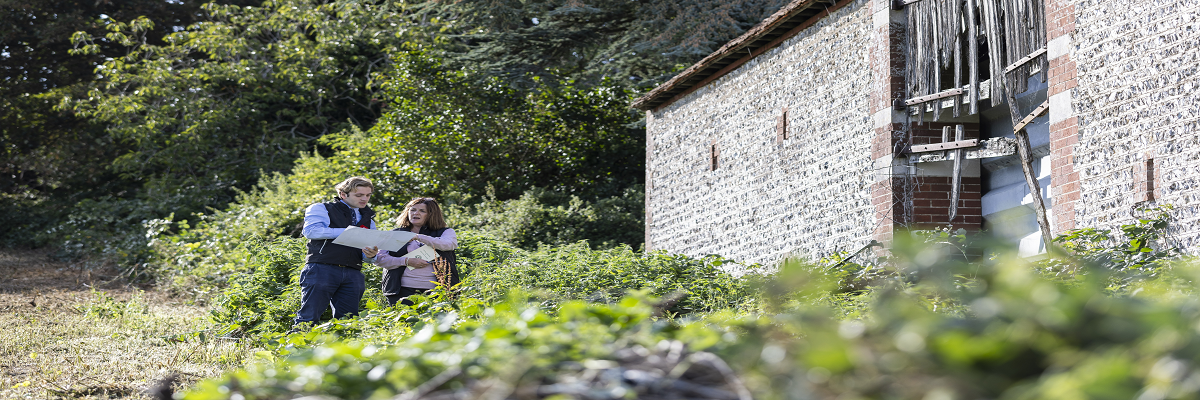Land Business Update | Week Commencing 5 August 2024
Farming
Positives and negatives in the NAO’s latest assessment of ELM and changes in farm support in England
The NAO has published its third report on Defra’s progress on the Farming and Countryside Programme, which is the programme that includes the Environmental Land Management (ELM) schemes and the productivity and advice grants, such as the Farming Equipment and Technology Fund, the Farming Innovation Programme and farm advice through the Farming Resilience Fund.
The report recognises the successes of the Programme so far, most notably the rapid progress in increasing the rate of take-up of agri‑environment schemes and the step-change in the speed of processing SFI applications, which is now down to eight days. However, the NAO also identified a long list of challenges that are still facing it, which we have split into the following categories:
Implementation
- The iterative approach of developing policy – who can remember all of the name changes to schemes!? – has made it difficult for farmers to plan their businesses. This seems to be more stable now but there is still plenty of scope to improve clarity.
- Defra is using outdated IT systems, which are due for replacement in the next few years. This is a risk to processing and administration of agreements, including making payments to farmers.
Delivering policy outcomes
- Gaps in the data on environmental outcomes is limiting Defra’s ability to fully understand the Programme’s impact on the environment.
- Defra has not published an ‘outcome measure’ against which to measure success in improving species abundance, which is a significant contributor to the ‘apex’ goal of achieving ‘thriving plants and wildlife. It is due by March 2025.
- The current approach of the SFI is for land managers to ‘pick and mix’ actions themselves. There is no clear plan on how to steer this so that the quality of actions (whether in the right combination, in the right places and coordinated with other farms), is increased so that expected environmental outcomes are delivered.
- Defra should publish a comprehensive and realistic assessment of the funding needed to meet all the Programme’s objectives. At present, funding is based on the historical level of funding under the CAP. The Wildlife Trusts and others have recently published research that says that funding should increase to £5.9 billion per annum across the UK to meet legally binding nature and climate targets, and improve the resilience of the UK farming industry. The current annual agricultural budget is £3.5 billion in the UK.
- The good-quality advice that farmers need to deliver on agri-environment and productivity is not yet in place.
Environment
Rapid review of the Environmental Improvement Plan (EIP) announced
The review is in part a result of pressure from the environmental sector. It will be completed by the end of the year and will be used to develop a new statutory plan for the natural environment. It is expected to lead to detailed delivery plans for each target (water pollution, reducing waste, planting trees, improving air quality and restoring biodiversity).
The review is also a reaction to the latest annual progress report on the EIP which found that plans for thriving plants and wildlife and clean air are deteriorating, which echoes the recent assessment by the Office for Environmental Protection. The progress report also stated that there was no or poor data to measure many of the metrics such as habitat creation for wildlife and the status of sites of special scientific interest. Overall, the all-species indicator is 69% of its starting value in 1970. Also 16% of species in Great Britain are threatened with extinction. The progress report does however show that some elements that contribute towards the ten EIP goals are improving, which is more positive news.
Forestry
Trees may be even better for the climate than previously thought
The woody surface of most trees absorbs methane, a potent greenhouse gas, although the rate of absorption varies greatly between tree species, according to research led by The University of Birmingham. This makes retaining existing trees even more important and is an additional benefit from planting new ones, estimated to be equivalent to 10% extra over benefits already estimated for expansion of temperate and tropical forests.
Ips found on sitka spruce in the UK for the first time
Evidence of damage from the beetle was found in a small number of cut and fallen Sitka spruce trees in close proximity to infested Norway spruce trees on a site in West Sussex. Defra and the Forestry Commission are monitoring the situation and say that there is no evidence of this happening elsewhere. There have also been further outbreaks of Ips on Norway spruce in West Sussex and in Kent, both within the Demarcated Area. Forestry Commission’s advice remains to be vigilant, report any sightings anywhere in Great Britain using the TreeAlert form and, in the South East of England, to proactively remove spruce and replant with other non-susceptible species (which may be grant funded).
Property
Labour reimposes minimum energy efficiency standards for let houses
The government is going to require rented homes to meet a minimum EPC C standard by 2030 or they cannot be let. It is not clear yet whether there will be any exemptions for older or hard-to-treat properties. It is also unknown whether and how EPC assessments may change, which the previous government was consulting on.
National Planning Policy Framework – house building targets to be increased by 50% in ‘radically different approach’
The government has launched an eight-week consultation on reforms to the National Planning Policy Framework, which is one of the key documents setting the direction and tone of the planning system. The proposals include:
- Reintroduce mandatory house building targets for councils and increasing the target for England to 370,000 a year, up from the previous target of 300,000, with the aim of building 1.5 million homes in England over this parliament.
- Councils will be required to bring their local plans up-to-date. Currently only a third have reviewed them in the past five years. The plans must include annually renewed five-year land supply strategies. This renewed impetus on local plan making will take time to wash through.
- Changing the operation of the presumption in favour of sustainable development, so that it supports housing delivery more.
- Changing the method used to calculate house building targets so that it now includes the number of people likely to move into an area if housing was cheaper.
- It was previously based on projected population and local affordability. The new method is closer to the “mutant algorithm’ that the previous government dropped under pressure from its MPs as it would have led to more housebuilding in their constituencies.
- Change the rules on building on previously developed ‘grey sites’ within the greenbelt, with a set of ‘golden rules’ governing how the released land can be developed. The rules include at least half of the homes built there having to be affordable, increased access to green spaces, and provision of infrastructure. The government is positioning this change as making the greenbelt, which was established in the 20th century, suitable for the 21st.
- Reverse changes made to the NPPF by the previous government in December 2023.
- Broaden the definition of brownfield land and strengthen the support for applications on brownfield land to be approved.
Separately but linked, the government has announced a taskforce to develop a new generation of new towns, with the taskforce led by Sir Michael Lyons and Dame Kate Barker. It has been asked to present a final shortlist of recommendations on appropriate locations to ministers within 12 months.
England has a poor record of building homes where they are needed – IFS
Linked to the above, some interesting new research from the Institute of Fiscal Studies (IFS) has looked at how well housebuilding in England has responded to changes in local demand over the last 25 years. It finds that the number of homes built in particular areas does not respond very much to changes in local economic conditions. For example, when demand to live in a local authority increases and raises local house prices by 10%, housing supply only increases by an additional 1.4%. This is a much weaker ‘housing supply response’ than in other countries such as France and Germany and also the US where the response is at least double. So what? It means that economic growth in England is being constrained by lack of supply of houses. What can be done about it? The IFS state that the source of variation in local housing supply elasticities is lack of available land to build on. There is more land available in places like Lincolnshire and Cambridgeshire compared with areas in and around London. Therefore policy makers should make the availability of land responsive to economic conditions – i.e., think about not just how many homes are built, but also where.






